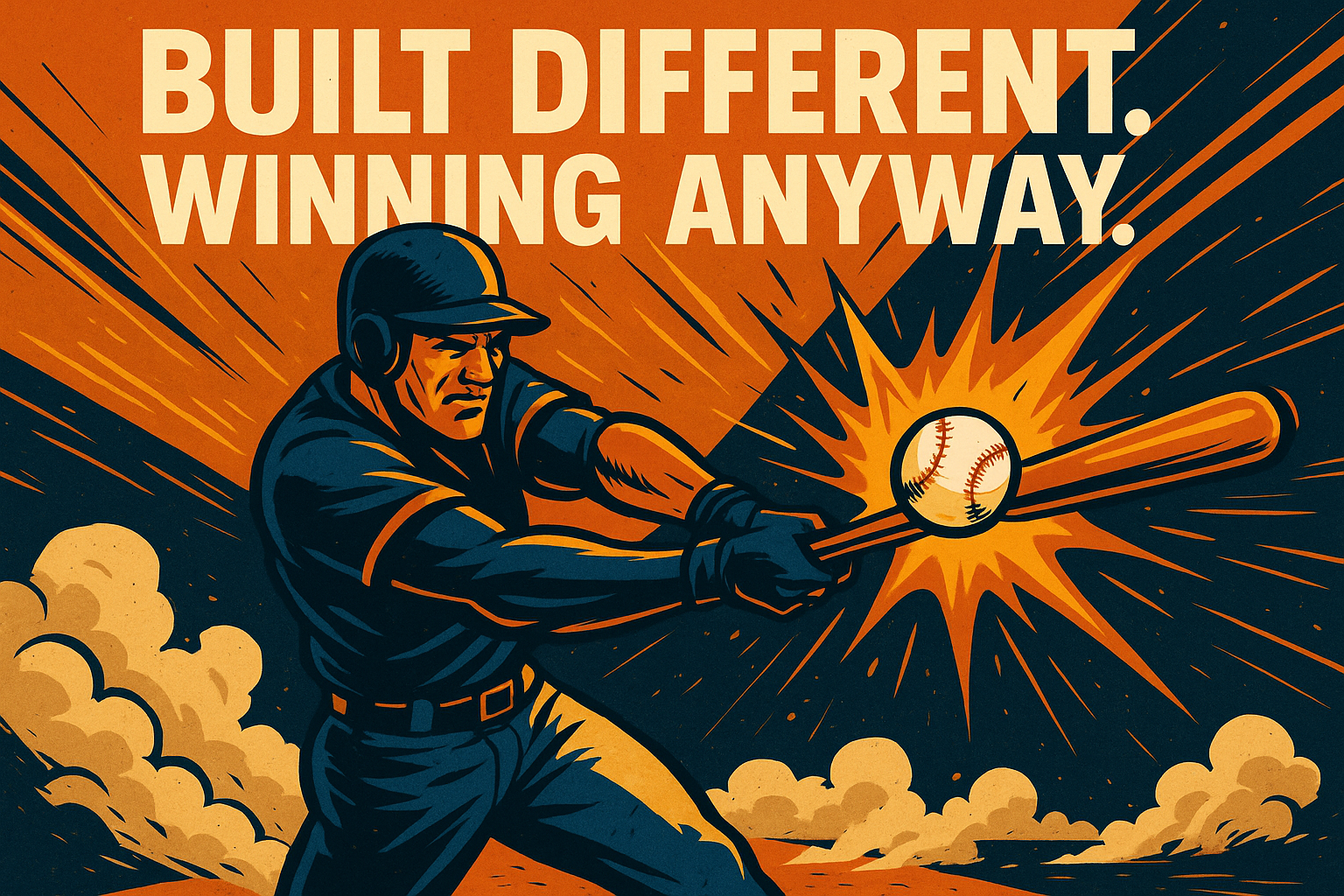Fat and Still an All-Star? What Vladimir Guerrero Jr. and Alejandro Kirk Prove About Weight Bias
For those who may not know, I’m a baseball fan.
Honestly, fan is an understatement—I love baseball. I love its history, rivalries, pace, strategy, my fellow fans… all of it.
Once, in a small-town bar in rural Illinois, I pointed out a photo of Shoeless Joe Jackson on the wall.
The bartender smiled, but the man next to me turned and said, “You know who Shoeless Joe Jackson is?”
“Of course,” I replied. “1919. White Sox. Cheating scandal. Odds are he didn’t cheat but never reported the others. I don’t think Buck Weaver cheated either.”
He paused, then laughed: “Well, shite. The world is coming to an end. This woman knows baseball.”
Take that how you will.
Baseball is a sport I adore—deeply and truly.
A Glorious World Series
This year’s World Series has been glorious.
It’s a showdown between the scrappy Canadians and the polished, well-paid Angelenos.
The narrative is rich, too: Shohei Ohtani, arguably the greatest player on the planet, is facing off against two scions of baseball—Vladimir Guerrero Jr. and Bo Bichette.
Fans are having fun with it. Canadians are trolling the Dodgers’ Japanese players by placing a Colonel Sanders lookalike behind home plate.
The Dodgers do that quirky dugout shimmy—adorable when Kiké Hernández does it, but... Freddie Freeman? Not quite as charming.
But amid all the excitement, something else has surfaced this postseason—something troubling.
The Bias Beneath the Banter
Both Vladimir Guerrero Jr. and Blue Jays catcher Alejandro Kirk are on the huskier side.
They’re both under six feet tall and over 200 pounds.
That hasn’t gone unnoticed by the national sports media—and not in a flattering way.
Commentators from Fox Sports and ESPN have taken jabs at their size, using thinly veiled criticisms that suggest, somehow, their bodies don’t belong on that field.
Let’s pause and unpack that.
Most of those commentators probably couldn’t tell you the difference between a burpee and a jumping jack.
Yet, here they are critiquing athletes who are performing at the highest level of professional baseball.
Out of every ten minor leaguers, only one makes it to the MLB.
These guys are the cream of the crop.
Excellence by the Numbers
Let’s talk about Guerrero Jr.
He’s been in the MLB for seven seasons—and has been selected as an All-Star in five of them.
Quick math: that’s 71% of his career spent being recognized as one of the best in the game.
And Kirk?
He’s only been an All-Star twice in six years, but his numbers would make most teams (minus the Mariners, maybe) thrilled to have him behind the plate.
Catchers work harder than almost anyone else on the field.
They don’t just play—they call the game. They’re responsible for every pitch, every movement.
On average, a catcher squats 150 to 200 times per game.
And these aren’t casual gym squats. These are explosive, reactive, high-stress movements—often while receiving 100-mph pitches with a bat being swung inches from their face.
But sure, let’s talk about how “fat” they are.
What Makes You Think They Can’t Be Excellent?
To those who question how someone can be overweight and still successful, I ask you to flip that question:
What makes you think they can’t be excellent?
Why do you disbelieve your own eyes?
We live in a society that equates fat with failure.
That kind of bias runs deep.
Fat men insult women by calling them “cows.” They turn the same insults on each other.
Celebrities like Selena Gomez and Beyoncé are body-shamed, even though most people couldn’t match their stamina, talent, or discipline on their best day.
This isn’t about health. This is about bias.
These prejudices are deeply rooted in classism, racism, and outdated standards—often white, Western, and colonial in origin.
It’s no coincidence that both Guerrero and Kirk are Hispanic—and that one would be identified as Black.
Bias doesn’t just see size. It sees color, class, and culture, too.
The “What About Their Knees?” Argument
And for those who say, “But what about their knees?”
Here’s a reality check: every professional catcher eventually deals with knee problems.
When you push the human body to its limits—whether in baseball, ballet, or anything else—wear and tear is inevitable.
Even Mikhail Baryshnikov, one of the greatest ballet dancers in the world, had a broken body by age 38.
I doubt anyone told him to lose weight.
Enough.
I got certified in Body Image Coaching because I was tired of hearing the same tired narrative—that no matter what we accomplish, fat people are still unworthy of basic respect.
Enough.
This postseason, I’m proudly cheering for the Toronto Blue Jays—and for their strong, skilled, and absolutely deserving athletes.
These men are All-Stars in every sense of the word.
To anyone still questioning their legitimacy, I challenge you to take a hard look at your own biases— and ask yourself what you’re really judging.

